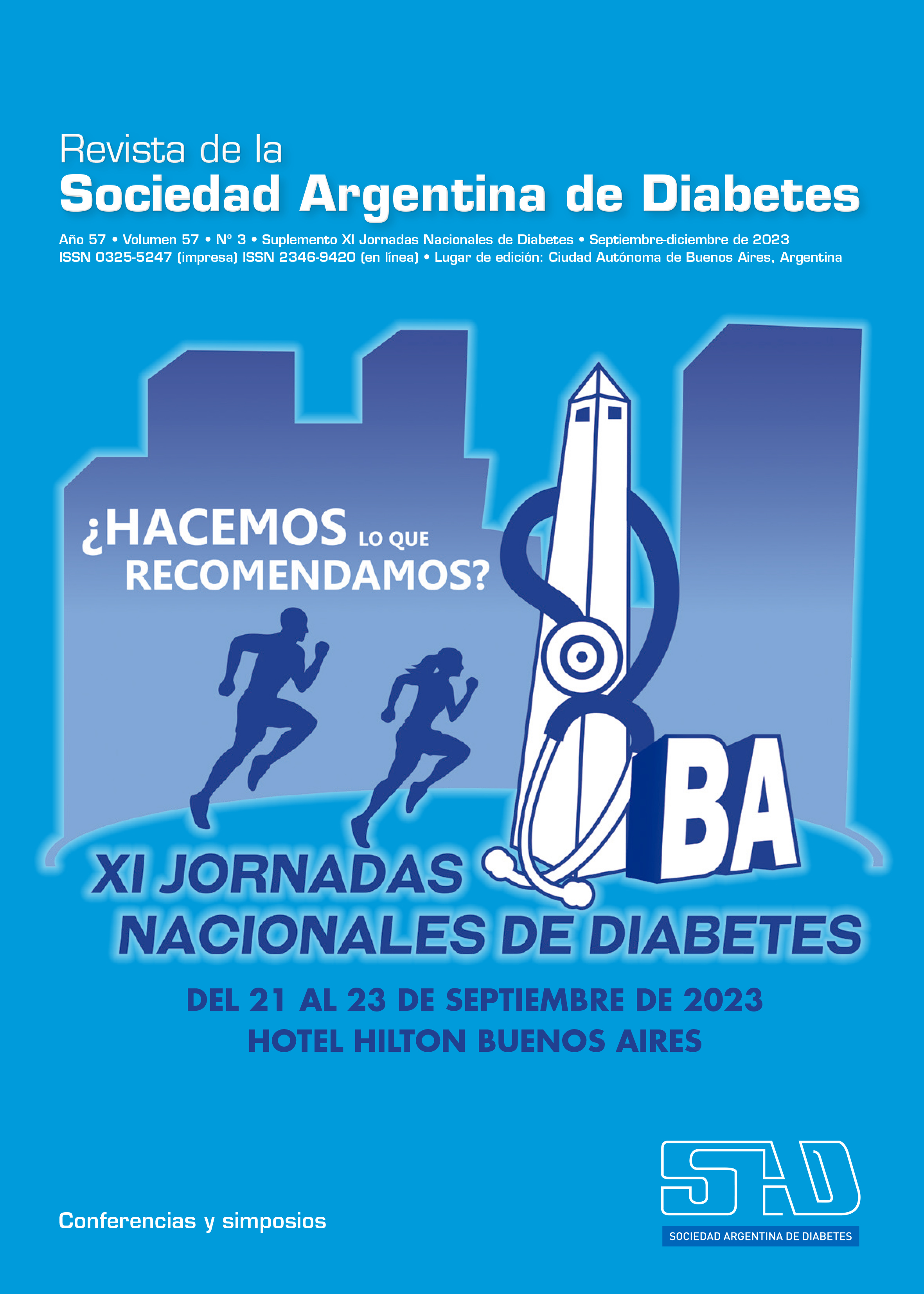Osteoporosis
DOI:
https://doi.org/10.47196/diab.v57i3Sup.680Keywords:
diabetes, osteoporosisAbstract
Over the past 30 years, it has been shown through a growing body of experimental and clinical evidence that diabetes exerts deleterious effects on bone tissue, making it one more target of diabetes complications. Different groups have shown an increased risk of fractures both in patients with type 1 diabetes associated with low bone mass, and in type 2 diabetes in whom normal or increased bone mass may be found, associated with decreased bone strength. Different risk factors associated with diabetes are linked to a higher rate of fractures. It has been shown that poorer metabolic control, the insulin requirement or a longer duration of the disease increase the risk of fractures.
Decreased bone turnover has been described due to lower osteoblast and osteoclast activity, which allows the accumulation of damage in bone tissue, worsening bone quality. Advanced glycation products (AGE) that accumulate due to hyperglycemia in long-surviving proteins such as bone collagen, alter the biomechanical properties of bone, affecting the quality of the material and increasing the risk of fracture. AGE also exert deleterious effects on osteoblasts and osteoclasts through interaction with their cognate receptor RAGE, present in these cells, that could be partly responsible for the low bone turnover in this condition. Thus, diabetic osteopathy could be characterized as a low turnover or adynamic bone disease, which would be associated with an accumulation of damage in the mineralized bone matrix and would justify the increased risk of fracture even in a context of normal or even increased bone mass.
Given the distinctive pathophysiological features of diabetic osteopathy, the effects of different therapeutic agents available for the treatment of osteoporosis have been evaluated retrospectively in diabetic individuals in large population-based studies or among diabetic individuals who participated in pivotal anti-osteoporotic drugs trials compared with the non-diabetic individuals. Although these studies were not designed to discern the effect of these drugs on the diabetic condition, individuals with diabetes showed increased bone mass, modification of turnover markers, and decreased risk of fracture in a similar way to the non-diabetic population.
References
I. Hofbauer L, et al. Bone fragility in diabetes: novel concepts and clinical implications. Lancet Diabetes Endocrinol 2022;10:207-220. doi: 10.1016/S2213-8587(21)00347-8.
II. McCarthy AD. Ages and bone ageing in diabetes mellitus. J Diabetes Metab 2013;4:276. doi: 10.4172/2155-6156.1000276.
III. Eastell R, et al. Diabetes mellitus and the benefit of antiresorptive therapy on fracture risk. Journal of Bone and Mineral Research 2022;37:2121-2131. doi: 10.1002/jbmr.4697
IV. Langdahl BL, et al. Real-world effectiveness of teriparatide on fracture reduction in patients with osteoporosis and comorbidities or risk factors for fractures: integrated analysis of 4 prospective observational studies. Bone 2018;116:58-66. doi: 10.1016/j.bone.2018.07.013.
Downloads
Published
Issue
Section
License
Copyright (c) 2023 on behalf of the authors. Reproduction rights: Argentine Diabetes Society

This work is licensed under a Creative Commons Attribution-NonCommercial-NoDerivatives 4.0 International License.
Dirección Nacional de Derecho de Autor, Exp. N° 5.333.129. Instituto Nacional de la Propiedad Industrial, Marca «Revista de la Sociedad Argentina de Diabetes - Asociación Civil» N° de concesión 2.605.405 y N° de disposición 1.404/13.
La Revista de la SAD está licenciada bajo Licencia Creative Commons Atribución – No Comercial – Sin Obra Derivada 4.0 Internacional.
Por otra parte, la Revista SAD permite que los autores mantengan los derechos de autor sin restricciones.




























